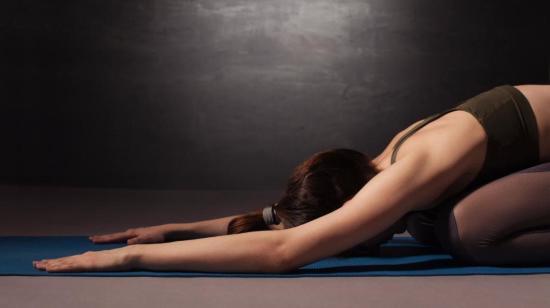What are you looking ?


How should you sleep if you have lower back pain?
Lower back pain not only affects a person's daily life but can also disturb their sleep. Furthermore, poor bed posture can worsen or even cause backache. So, what are the best sleeping positions for lower back pain?
This article provides a guide to the six best sleeping positions for lower back pain, as well as offering advice on pillows and mattresses, sleep hygiene, and when to see a doctor.
The best sleeping positions
Not only can lower back pain get in the way of a good night's rest, but poor sleeping posture may make the existing pain worse.
A poor sleeping position may even be the underlying cause of lower back pain. This is because certain positions can place unnecessary pressure on the neck, hips, and back.
It is important to maintain the natural curve of the spine when lying in bed. A person can do this by ensuring the head, shoulders, and hips are in alignment, and that the back is properly supported. The best way to do this is usually by sleeping on the back.
However, many people are uncomfortable sleeping on their back or find it causes them to snore. Everyone sleeps differently, so there is a variety of options for people who want to sleep better and reduce their back pain.
For people experiencing lower back pain at night, trying out the following postures and tips may provide relief.
1. Sleeping on the back with knee support
Lying on the back is usually considered to be the best sleeping position for a healthy back.
This position evenly distributes weight the full length of the body's largest surface. It also minimizes pressure points and ensures good alignment of the head, neck, and spine.
Placing a small pillow under the knees can provide additional support and help maintain the natural curve of the spine.
To adopt this sleeping position, a person should:
- Lie flat on their back facing the ceiling, and avoid twisting the head sideways.
- Position a pillow to support the head and neck.
- Place a small pillow under the knees.
- For extra support, fill in any other gaps between the body and mattress with additional pillows, such as beneath the lower back.
2. Sleeping on the side with a pillow between the knees
Although lying on the side is a popular and comfortable sleeping position, it can pull the spine out of position. This can strain the lower back.
Correcting this is easy. Anyone who sleeps on their side can simply place a firm pillow between their knees. This raises the upper leg, which restores the natural alignment of the hips, pelvis, and spine.
To adopt this sleeping position, a person should:
- Get into bed and carefully roll on to one side.
- Position a pillow to support the head and neck.
- Pull the knees up slightly then place a pillow between them.
- For extra support, fill in any gaps between the body and mattress with more pillows, especially at the waist.
People who habitually turn to sleep on their front may also want to try hugging a large pillow against their chest and stomach to aid sleep and keep their back aligned.
3. Sleeping in the fetal position
For people with a herniated disc, adopting a curled-up fetal position may bring relief during the night. This is because lying on the side with the knees tucked into the chest reduces bending of the spine and helps open up the joints.
To adopt this sleeping position, a person should:
- Get into bed and carefully roll on to one side.
- Position a pillow to support the head and neck.
- Draw the knees up towards the chest until the back is relatively straight.
4. Sleeping on the front with pillow under the stomach
Lying on the front of the body is usually considered the worst sleeping posture. However, for those who struggle to sleep in another position, placing a slim pillow underneath the stomach and hips can help improve spinal alignment.
Sleeping on the front may also benefit people with a herniated disc or a degenerative disc disease.
To adopt this sleeping position, a person should:
- Get into bed and roll on to their front.
- Place a slim pillow underneath the abdomen and hips to raise the mid-section.
- Use a flat pillow for the head or consider sleeping without one.
5. Sleeping on the front with the head face down
Another reason sleeping on the front is considered bad is because the head is usually turned to one side. This twists the spine and places additional stress on the neck, shoulders, and back.
To avoid this, try lying face down. A small but firm pillow or tightly rolled-up towel can be used to prop up the forehead, allowing room to breathe. This should be done in addition to placing a pillow under the stomach.
To adopt this sleeping position, a person should:
- Get into bed and roll onto their front.
- Place a slim pillow underneath the abdomen and hips to raise the mid-section.
- Position a pillow or rolled-up towel under the forehead to create adequate breathing space between the mouth and mattress.
6. Sleeping on the back in a reclined position
Sleeping in a reclined position may benefit lower back pain, particularly in people with isthmic spondylolisthesis.
If significant relief is found from resting in a reclined chair, it may be worth investing in an adjustable bed that can be positioned accordingly.
When to see a doctor
Anyone with severe or worsening back pain, particularly after a fall or injury, should speak to a doctor. People should also speak to a doctor if they experience pain that gets worse after resting or at night.
People should seek immediate medical advice for back pain if it is accompanied by any of the following:
- fever
- chest pain
- numbness in the legs, buttocks, or groin area
- difficulty passing urine
- loss of bladder or bowel control
- unexpected weight loss
If back pain is causing long-term lack of sleep, a person should speak to a doctor about treatment options and lifestyle changes to improve their symptoms and help them feel better rested.






